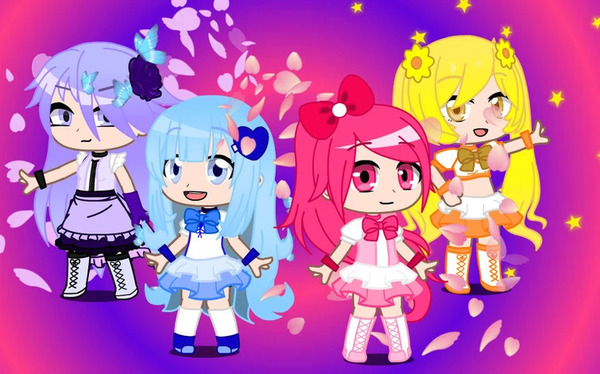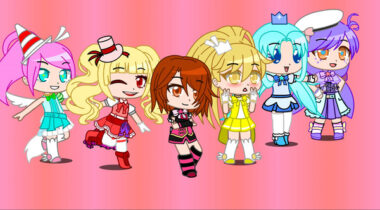Gacha Cute is not just a platform for creating adorable characters and vibrant scenes-it’s a playground for animators to craft dynamic stories. While basic animations are accessible, many creators struggle with advanced techniques that bring their projects to life. This article dives deeply into mastering animation in Gacha Cute, providing actionable insights and strategies for creating professional-level animations.
Introduction to Animation Challenges in Gacha Cute
Animation in Gacha Cute can be challenging, especially when transitioning from simple movements to complex, seamless sequences.

Animation in Gacha Cute can be challenging, especially when transitioning from simple movements to complex, seamless sequences.
Why Advanced Animations Matter
Advanced animations can enhance storytelling, captivate viewers, and make your creations stand out in the Gacha community.
The Struggles of Beginners
Creators often face issues like choppy transitions, unnatural movements, and inconsistent pacing.
Setting Up Your Animation Project
The foundation of a good animation is proper preparation.
Planning Your Scenes
Storyboard First: Sketch out key scenes to visualize the flow.
Define Key Moments: Identify moments that require detailed animations.
Organizing Assets
Gather character designs, props, and backgrounds beforehand.
Categorize assets into folders for quick access during animation.
Mastering Character Movements
Smooth and realistic movements bring characters to life.
Keyframe Animation Basics
Keyframes are critical frames that define the start and end of a movement.
Use more keyframes for fluid motion.
Ensure consistency in transitions by spacing frames evenly.
Adding Subtle Details
Slight head tilts can convey curiosity or concern.
Adjust hand positions for natural gestures.
Enhancing Expressions with Animation
Facial expressions are vital in conveying emotions.
Syncing Expressions to Dialogues
Align mouth movements with character speech for a more immersive experience.
Transitioning Between Emotions
Use gradual changes in eye shapes or mouth positions to shift from one emotion to another smoothly.
Timing and Pacing in Animations
Pacing dictates the flow and rhythm of your animation.
The Importance of Timing
Fast transitions suit action-packed scenes.
Slow, deliberate movements create tension or drama.
Adjusting Frame Rates
Experiment with frame rates to match the mood of your animation.
Incorporating Backgrounds and Props
Backgrounds and props can elevate the scene’s realism and depth.
Layering for Depth
Place characters and props at varying distances to create a sense of perspective.

Place characters and props at varying distances to create a sense of perspective.
Animating Props
Add motion to props like swinging swords or flowing capes.
Sync prop movements with character actions.
Using Lighting and Shadows
Lighting can dramatically affect the mood of your animations.
Creating Atmosphere
Bright and vibrant lighting: Suitable for cheerful scenes.
Dim and moody lighting: Ideal for suspenseful moments.
Adding Shadows
Shadows can add realism. Adjust their intensity and direction based on the light source.
Experimenting with Advanced Camera Angles
Camera angles can add cinematic quality to your animations.
Types of Angles to Try
Close-ups: Highlight facial expressions or small details.
Bird’s-eye view: Showcase the entire scene or emphasize scale.
Tracking shots: Follow character movement for dynamic action.
Using Zooms and Pans
Smooth zooms and pans can guide the viewer’s attention effectively.
Syncing Animations with Music
Music enhances emotional impact and helps tie scenes together.
Choosing the Right Track
Match the tempo and mood to the scene’s tone.
Avoid overpowering the animation with loud or distracting music.
Syncing Tips
Use beats to time character actions or scene transitions for a harmonious experience.
Troubleshooting Common Animation Issues
Even advanced animators encounter challenges.
Fixing Choppy Animations
Add more in-between frames to smooth out movements.
Revisit keyframes to ensure proper alignment.
Avoiding Overcomplication
Stick to your storyboard to prevent unnecessary additions.
Focus on perfecting core movements before adding extra details.
Sharing and Showcasing Your Animations
Once your animation is polished, it’s time to share it with the world.
Platforms to Use
YouTube: Best for long-form content.
TikTok: Great for short clips and trends.
Discord: Engage with the Gacha Cute community directly.
Gathering Feedback
Ask for constructive criticism to refine your skills further.

Ask for constructive criticism to refine your skills further.
Conclusion
Mastering advanced animations in Gacha Cute is a rewarding journey that combines creativity with technical skills. By focusing on key techniques like character movements, lighting, and timing, you can create animations that captivate and inspire. With practice and patience, your animations can become a hallmark of storytelling excellence in the Gacha Cute community.


